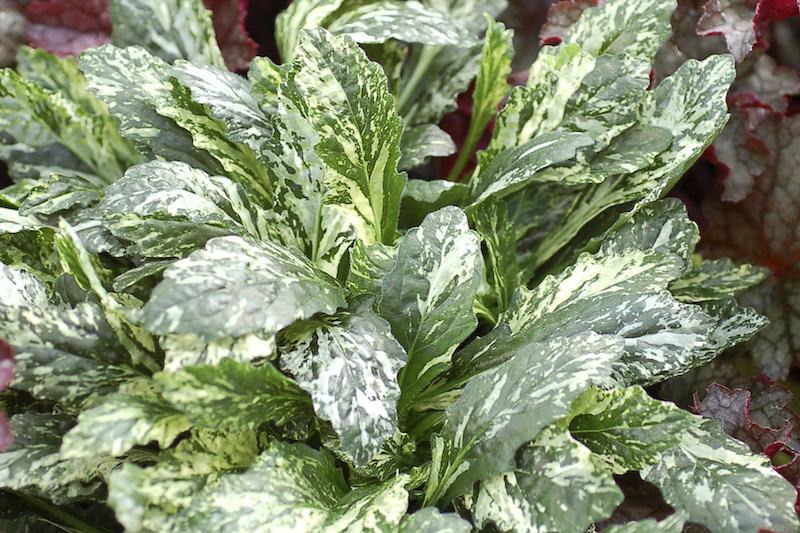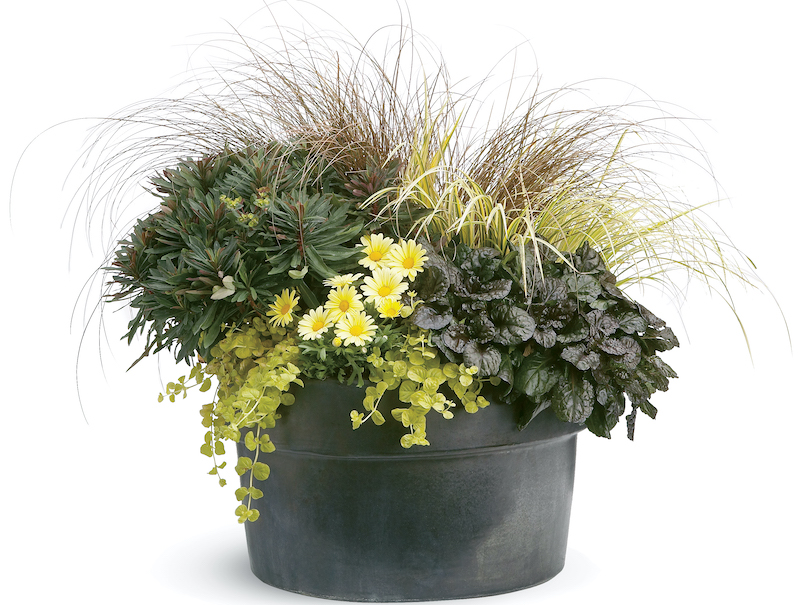Growing Ajuga
Taking care of Ajuga (Ajuga reptans) is a fairly easy task because it grows so vigorously. Common names for this plant include “Carpetweed” and “Bugleweed”. If you have an area that doesn’t quite take to turf, try this attractive perennial. Ajuga is a creeping ground cover that’s ideal for growing under trees and large shrubs where other plants may not thrive.
It can reach a mature size of 6 to 9 inches tall and wide. Ajuga is capable of producing flower spikes that can reach 8 to 10 inches tall. Blooms appear mid to late spring and can range in color from white to blue and purple. This semi-evergreen is cold hardy to zone 3 and deer resistant.

Planting Ajuga
Wait until frost risk is over to plant Ajuga outdoors. Choose a location that receives at least 3 to 4 hours of sunlight daily. Ajuga looks great when planted in rock crevices and hardscapes. Consider planting Ajuga away from turf or other flower beds, as this plant is an aggressive spreader. In fact, Ajuga makes it an ideal choice for displacing weeds in an area.
Dig a hole as deep as the root ball and loosen the root ball before planting. Back fill the hole with a well-draining soil blend that contains a fair amount of organic matter. Space Ajuga plants 8 to 15 inches apart. Ajuga may be invasive depending on your area, especially if you live in Maryland, Oregon, or West Virginia, so make sure to double-check your county’s invasive species list prior to planting if you have any concerns.

Watering Ajuga
Ajuga has medium moisture needs. It prefers its soil to be slightly moist at all times if possible. This plant will benefit from regular watering until its roots are established. Water Ajuga thoroughly upon planting to get rid of any air pockets that may exist. Ajuga is highly adaptable and will tolerate short periods of moderately dry soil. These plants are fairly low maintenance when it comes to watering and will eventually sustain themselves with normal rainfall.
Fertilizing Ajuga
Ajuga is a light feeder and a vigorous grower that seldom needs fertilizing. Amend the soil as needed with organic compost or apply a slow-release, granular fertilizer. Ajuga prefers rich and well-draining soil. If you have poor soil, topdress the area around the plant with compost every year or two in the spring. Ultimately, don’t worry too much about fertilizing this extremely hardy plant.
Pruning Ajuga
To keep Ajuga plants under control, they will need regular pruning. Ajuga spreads by sending out runners similar to strawberries. These runners can either be redirected or removed twice during the growing season so as to cut down on unwanted spreading. Remove spent flower spikes late in the summer. For best growth results, thin out your Ajuga plants about every 2-3 years as needed to prevent overcrowding. If you need to cut back a large patch of Ajuga, feel free to use a lawnmower that’s set to the tallest blade height.
Caring For Ajuga in Pots
The soil should be kept moist around your Ajuga plant. In a pot, plants can dry out more quickly, so ensure that this plant receives adequate moisture. Ajuga will have a slower growth rate in locations that receive more sunlight. If you are concerned about overcrowding in a container, place it in a bright location. Pruning Ajuga is especially necessary to control growth in a container. Simply snip off new plantlets as they appear to keep the size manageable. Some companion plants that will thrive when planted with Ajuga include succulents and sedums or creeping thyme.

Winter Care for Ajuga
Ajuga is cold hardy down to -30 degrees Fahrenheit. This plant provides winter interest and color. Try this tough semi-evergreen in your winter container garden. You can find different cultivars of Ajuga that turn golden, copper, or burgundy during the winter months. Ajuga won’t need winter pruning, so it’s a great easy-care choice. After its winter display, you can look forward to those bright purple flower spikes appearing once again.
 |
Author Chris Link - Published 3-10-2023 |
